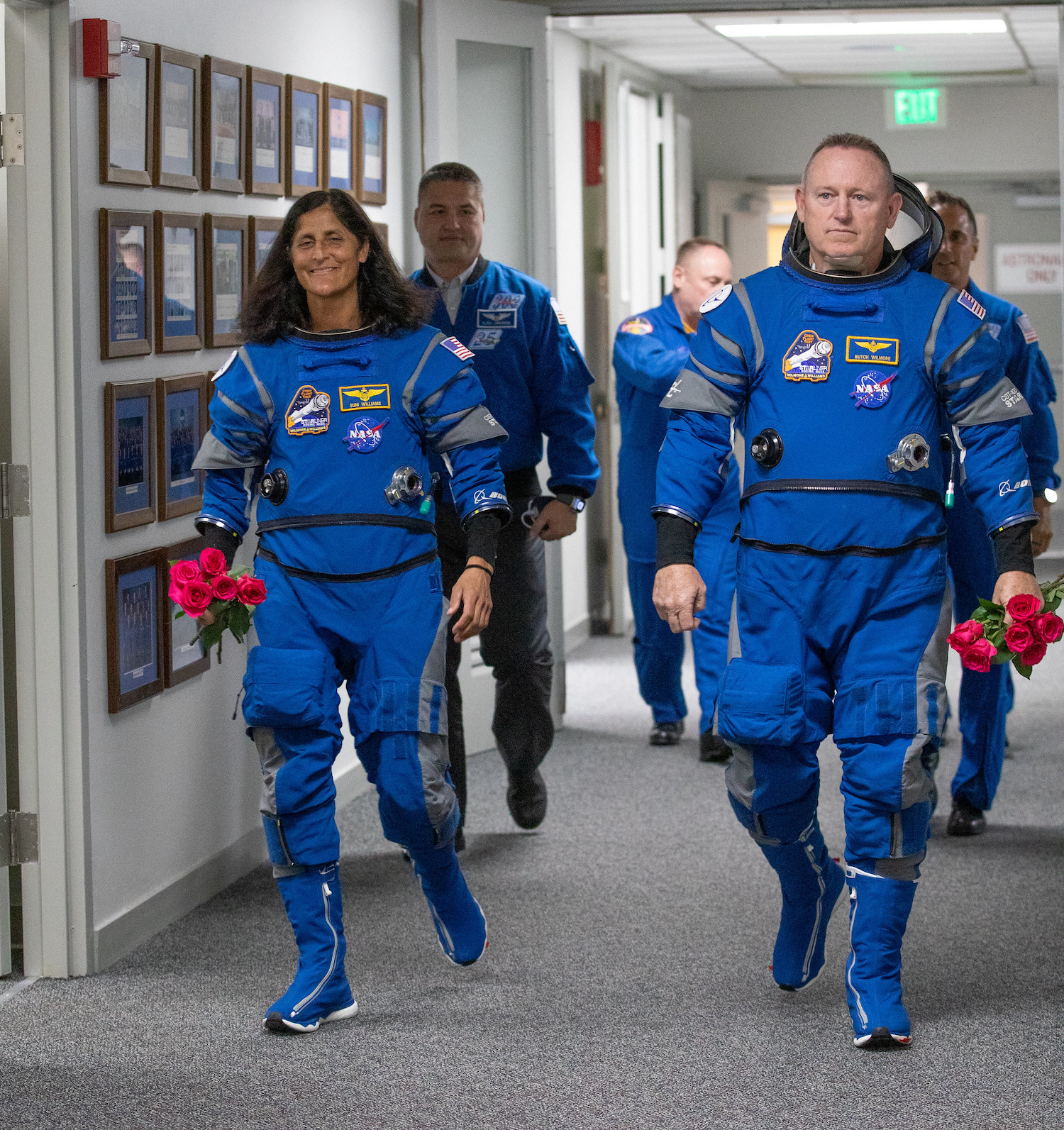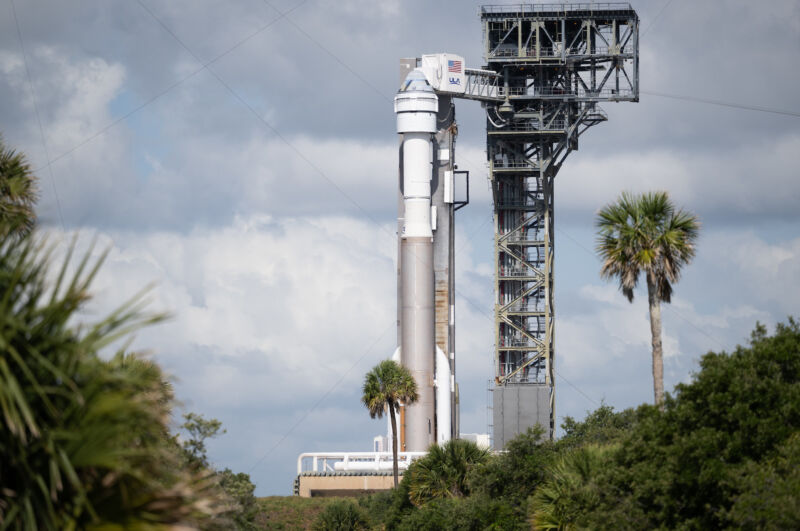Astronauts Butch Wilmore and Suni Williams climbed into their seats inside Boeing's Starliner spacecraft Monday night in Florida, but trouble with the capsule's Atlas V rocket kept the commercial ship's long-delayed crew test flight on the ground.
Around two hours before launch time, shortly after 8:30 pm EDT (00:30 UTC), United Launch Alliance's launch team stopped the countdown. "The engineering team has evaluated, the vehicle is not in a configuration where we can proceed with flight today," said Doug Lebo, ULA's launch conductor.
The culprit was a misbehaving valve on the rocket's Centaur upper stage, which has two RL10 engines fed by super-cold liquid hydrogen and liquid oxygen propellants.
“We saw a self-regulating valve on the LOX (liquid oxygen) side had a bit of a buzz; it was moving in a strange behavior," said Steve Stich, NASA's commercial crew program manager. "The flight rules had been laid out for this flight ahead of time. With the crew at the launch pad, the proper action was to scrub.”
The next opportunity to launch Starliner on its first crew test flight will be Friday night at 9 pm EDT (01:00 UTC Saturday). NASA announced overnight that officials decided to skip a launch opportunity Tuesday night to allow engineers more time to study the valve problem and decide whether they need to replace it.
Work ahead
Everything else was going smoothly in the countdown Monday night. This mission will also be the first time astronauts have flown on ULA's Atlas V rocket, which has logged 99 successful flights since 2002. It is the culmination of nearly a decade-and-a-half of development by Boeing, which has a $4.2 billion contract with NASA to ready Starliner for crew missions, then carry out six long-duration crew ferry flights to and from the International Space Station.
This crew test flight will last at least eight days, taking Wilmore and Williams to the space station to verify Starliner's readiness for operational missions. Once Starliner flies, NASA will have two human-rated spacecraft on contract. SpaceX's Crew Dragon has been in service since 2020.
When officials scrubbed Monday night's launch attempt, Wilmore and Williams were already aboard the Starliner spacecraft on top of the Atlas V rocket at Cape Canaveral Space Force Station, Florida. The Boeing and ULA support team helped them out of the capsule and drove them back to crew quarters at the nearby Kennedy Space Center to wait for the next launch attempt.
"I promised Butch and Suni a boring evening," said Tory Bruno, ULA's CEO. "I didn’t mean for it to be quite this boring, but we’re going to follow our rules, and we’re going to make sure that the crew is safe."
When the next launch attempt actually occurs depends on whether ULA engineers determine they can resolve the problem without rolling the Atlas V rocket back to its hangar for repairs.
The valve in question vents gas from the liquid oxygen tank on the Centaur upper stage to maintain the tank at proper pressures. This is important for two reasons. The tank needs to be at the correct pressure for the RL10 engines to receive propellant during the flight, and the Centaur upper stage itself has ultra-thin walls to reduce weight, and requires pressure to maintain structural integrity.

Astronauts Suni Williams and Butch Wilmore, wearing their Boeing spacesuits,
during Monday evening's launch attempt.
NASA/Kim Shiflett
Around an hour before ULA scrubbed the launch attempt, the launch team noticed oscillations in measurements at the top of the Centaur liquid oxygen tank. The ground crew at the launch pad, a few feet from the rocket, reported an unusual "chattering" sound at the same time.
This chattering or buzzing sound was associated with rapid movement of the relief valve. In this case, it was cycling about 40 times per second.
"Every now and again, on rare occasions, a valve like that can get into a position where it’s just off the seat," Bruno said. "Its temperature, its stiffness, everything is just right and it will flutter, or it’ll buzz in this base. It will cycle. We’ve seen that before."
On previous occasions, such as on an Atlas V launch in 2015, ULA's launch team commanded the valve closed and reopened the valve, and the buzzing motion stopped. This allowed the launch to proceed successfully. For safety reasons, ULA didn't want to take that step with the astronauts inside the Starliner spacecraft atop the rocket, so they waited until the crew departed the launch pad Monday night.
"It has, in fact, stopped," Bruno said. "Once we got the crew off, we cycled the valve and it stopped buzzing. If this was a satellite, that is our standard procedures, and the satellite would already be in orbit. But that changes the state of the fueled Centaur, and we don’t do that when people are present. So our flight rules called for us to scrub and take the crew off before we cycled that valve."
ULA engineers are analyzing data to determine whether the rapid cycling of the relief valve consisted of full open and close cycles or whether the valve was moving a fraction of its full range of motion. The valve has been tested to show it can sustain at least 200,000 cycles and still function normally.
If the buzzing behavior noticed Monday night was caused by full open and close cycles, engineers determined the valve was nearing that 200,000-cycle limit.
"What we are analyzing tonight is data that would help us understand, were these full cycles ... or were these low amplitude, low energy buzzes against the seat, in which case we would calculate that equivalent energy and we would have an equivalent count of cycles," Bruno said. "If they are significantly less than the 200,000, then we might feel we have enough life to attempt another launch.”
In that situation, officials could give the green light to proceed with another countdown Friday evening.
However, if managers decide the valve is nearing its operational limit, teams will roll the Atlas V and Starliner back to ULA's vertical hangar about a third of a mile south of the launch pad. There, technicians would change out the valve, a process that Bruno said would take a few days. The Atlas V could return to the launch pad as soon as this weekend.
Stich said the Starliner test flight has launch opportunities available Tuesday, Friday, and Saturday, then the next launch dates would be in the middle of next week, perhaps May 14 and 15. Officials want to ensure the Starliner spacecraft can launch on a trajectory to reach the space station within about 24 hours of launch. This means the position of the space station in its orbit precludes launch opportunities on some days.



3175x175(CURRENT).thumb.jpg.b05acc060982b36f5891ba728e6d953c.jpg)

Recommended Comments
There are no comments to display.
Join the conversation
You can post now and register later. If you have an account, sign in now to post with your account.
Note: Your post will require moderator approval before it will be visible.